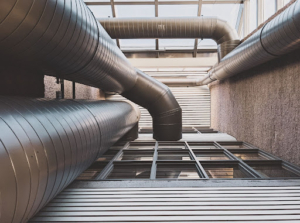How to Prepare a Commercial Building for an Inspection

Whether it is a periodic inspection performed by local government or a planned inspection aimed at being proactive in ensuring top quality of the facility, an inspection is nonetheless a stressor for commercial building owners and managers. And while many industrial steel buildings and other innovative commercial construction types score high marks for durability, there will inevitably be some areas of concern that pop up over time. Rather than let these small concerns turn into a full-scale laundry list, keep reading to discover 5 ways to prepare a commercial building for an upcoming inspection.
Have an Understanding of the Building’s Energy Efficiency
With the United States having a goal of a net-zero economy by 2050, commercial buildings are under greater pressure than ever to become carbon neutral. As a result, inspectors are going to be digging deep to determine the building’s energy efficiency rating. They will look at everything including the building envelope, lighting systems, mechanical systems, power systems, and water heating systems to arrive at a rating.
As a result, be sure to have your energy-efficient features on full display so that they can stand out during the inspection. While solar panels and any renewable energy features are the obvious areas that will catch inspectors’ attention, be sure to delineate any improvements in insulation, installation of architectural facades to better control light flow, and contemporary windows so inspectors can accurately assess how your building will perform in terms of energy consumption.
Make Sure the Air Quality Is Top Notch

Building owners have long known the importance of ensuring high-quality interior air, as toxins and allergens are hazardous to health and can stand in the way of comfort and performance. However, air quality is a hot-button issue for which inspectors are on keen alert in the wake of the COVID-19 pandemic.
Therefore, it is critical that you have taken steps to ensure the quality of the air in your commercial building. Regularly service the HVAC system to make sure filters are clean and functioning properly, install tunnel ventilation dampers in areas of the building where air has a tendency to stagnate, make windows intuitive to open and close for tenants, and design some functional exterior space so that tenants can get outside for some fresh air, as necessary.
Check for Any Fire or Safety Hazards
Safety should be at the top of the list for any type of building, but it is of critical importance for commercial spaces. Simply put, safety hazards are a lawsuit waiting to happen.
Before the inspector arrives, make sure that there are no areas of the building that will get red-lined as a hazard. Are there adequate fire doors and smoke baffles in the building? Is the fire escape accessible and the stairs in good condition? Are there any raised or damaged sections of flooring? Is the building ADA compliant?
Don’t Let Minor Issues Become Major Issues

There is a tendency to procrastinate when it comes to “quick fix” items. If you notice a small crack in the wall that could easily be fixed with a little sealant or a window that does not quite close all the way, it can be easy to take a “wait till tomorrow” approach.
However, these small issues are just one severe weather event away from becoming a monstrosity. Not only will these issues compromise the safety and energy efficiency of the commercial building, but they could result in a fine, depending on the type of inspection you have coming.
Therefore, do your own walk-through ahead of inspection time to check the condition of your stucco siding panels, roofing materials, windows, and any other areas subjected to the forces of nature. Getting on top of them ahead of time can save you a lot of money and hassle in the long run.
Listen to the Concerns of Tenants

In many cases, it does not take a professional eye to spot an issue. As such, one of the most underrated things a property manager can do ahead of an inspection is to listen to the concerns of the tenants. Have there been any complaints in recent weeks that have not been taken seriously? Are there any areas of the building that tenants or patrons comment on with regularity? If there are items coming to the attention of the casual observer, there is little chance that they will escape the professional eye of the inspector.
Ace Your Commercial Building Inspection By Using This Helpful Checklist
No matter how routine, an inspection is sure to cause at least a little anxiety in commercial property owners and managers. To help mitigate these feelings, it is important to stay ahead of the curb and take building quality into your own hands. By understanding the building’s energy efficiency, ensuring top-notch air quality, checking for fire and safety hazards, not letting small fixes snowball, and listening to the concerns of tenants, you can put your commercial building in a prime position to shine come inspection time.
Brian Jeffries is the content director for the Innovative Building Materials blog and a content writer for the building materials industry. He is focused on helping fellow homeowners, contractors, and architects discover materials and methods of construction that save money, improve energy efficiency, and increase property value.



Leave a Reply
Want to join the discussion?Feel free to contribute!